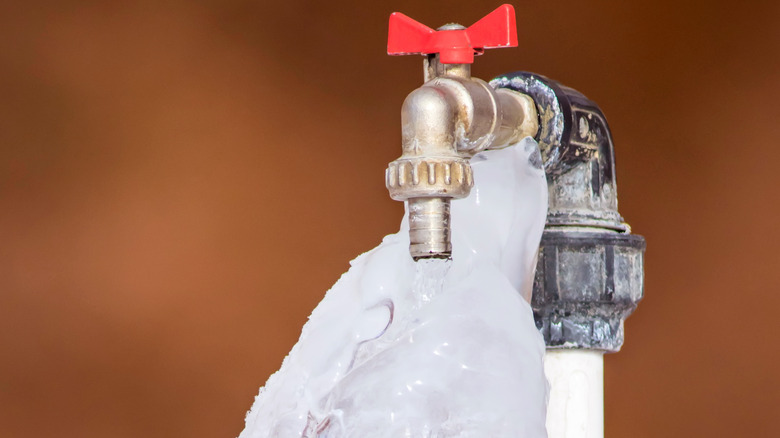Protecting Against Frozen Plumbing: Best Strategies for Cold Weather
Protecting Against Frozen Plumbing: Best Strategies for Cold Weather
Blog Article
What're your thoughts concerning Winter Plumbing Precautions: Preventing Frozen Pipes?

Winter can damage your pipes, particularly by freezing pipes. Right here's exactly how to stop it from happening and what to do if it does.
Introduction
As temperature levels drop, the risk of frozen pipelines rises, potentially resulting in expensive repairs and water damage. Understanding exactly how to prevent icy pipes is essential for house owners in cool environments.
Comprehending Icy Pipelines
What creates pipelines to ice up?
Pipes freeze when revealed to temperature levels listed below 32 ° F (0 ° C) for prolonged durations. As water inside the pipes ices up, it expands, taxing the pipeline walls and potentially creating them to break.
Risks and problems
Frozen pipes can cause supply of water disturbances, building damages, and pricey repair services. Burst pipelines can flood homes and create comprehensive architectural damage.
Indications of Frozen Pipes
Recognizing frozen pipelines early can stop them from breaking.
Just how to identify icy pipelines
Try to find reduced water circulation from taps, uncommon odors or sounds from pipelines, and noticeable frost on subjected pipes.
Prevention Tips
Insulating vulnerable pipelines
Wrap pipes in insulation sleeves or make use of warmth tape to protect them from freezing temperature levels. Concentrate on pipes in unheated or external areas of the home.
Home heating strategies
Keep interior spaces sufficiently warmed, particularly areas with pipes. Open closet doors to allow warm air to flow around pipes under sinks.
Securing Exterior Pipes
Garden hose pipes and exterior faucets
Separate and drain pipes yard tubes before winter months. Set up frost-proof faucets or cover exterior faucets with shielded caps.
What to Do If Your Pipes Freeze
Immediate activities to take
If you believe icy pipelines, maintain taps open up to ease pressure as the ice melts. Make use of a hairdryer or towels taken in hot water to thaw pipes gradually.
Long-Term Solutions
Structural adjustments
Think about rerouting pipelines away from exterior wall surfaces or unheated areas. Add extra insulation to attic rooms, cellars, and crawl spaces.
Upgrading insulation
Invest in top notch insulation for pipes, attics, and walls. Appropriate insulation aids preserve regular temperature levels and lowers the threat of frozen pipelines.
Verdict
Protecting against frozen pipelines calls for proactive procedures and quick actions. By comprehending the causes, signs, and safety nets, homeowners can safeguard their plumbing throughout cold weather.
Helpful Tips to Prevent Frozen Pipes this Winter
UNDERSTANDING THE BASICS: WHY PIPES FREEZE AND WHY IT’S A PROBLEM
Water freezing inside pipes is common during the winter months, but understanding why pipes freeze, and the potential problems it can cause is crucial in preventing such incidents. This section will delve into the basics of why pipes freeze and the associated problems that may arise.
THE SCIENCE BEHIND FROZEN PIPES
When water reaches freezing temperatures, it undergoes a physical transformation and solidifies into ice. This expansion of water as it freezes is the primary reason pipes can burst. As the water inside the pipe freezes, it expands, creating immense pressure on the walls. If the pressure becomes too great, the pipe can crack or rupture, leading to leaks and water damage.
FACTORS THAT CONTRIBUTE TO PIPE FREEZING
Low Temperatures: Extremely cold weather, especially below freezing, increases the risk of pipes freezing. Uninsulated or Poorly Insulated Pipes: Pipes located in unheated areas, such as basements, crawl spaces, or attics, are more prone to freezing. Insufficient insulation or lack of insulation altogether exacerbates the problem. Exterior Wall Exposure: Pipes running along exterior walls are susceptible to freezing as they encounter colder temperatures outside. Lack of Heating or Temperature Regulation: Inadequate heating or inconsistent temperature control in your home can contribute to frozen pipes. PROBLEMS CAUSED BY FROZEN PIPES
- Pipe Bursting: As mentioned earlier, the expansion of water as it freezes can cause pipes to burst, resulting in significant water damage.
- Water Damage: When pipes burst, it can lead to flooding and water damage to your property, including walls, ceilings, flooring, and personal belongings.
- Structural Damage: Prolonged exposure to water from burst pipes can compromise the structural integrity of your home, leading to costly repairs.
- Mold and Mildew Growth: Excess moisture from water damage can create a favorable environment for mold and mildew growth, posing health risks to occupants.
- Disrupted Water Supply: Frozen pipes can also result in a complete or partial loss of water supply until the issue is resolved.
WHY CERTAIN PIPES ARE MORE PRONE TO FREEZING
- Location: Pipes located in unheated or poorly insulated areas, such as basements, crawl spaces, attics, or exterior walls, are at higher risk of freezing.
- Exterior Pipes: Outdoor pipes, such as those used for irrigation or exposed plumbing, are particularly vulnerable to freezing as they are directly exposed to the elements.
- Supply Lines: Pipes that carry water from the main water supply into your home, including the main water line, are critical to protect as freezing in these lines can affect your entire plumbing system.
- Underground Pipes: Pipes buried underground, such as those connected to sprinkler systems or outdoor faucets, can be susceptible to freezing if not properly insulated.
https://busybusy.com/blog/helpful-tips-to-prevent-frozen-pipes-this-winter/

Hopefully you liked our excerpt about 6 Ways to Prevent Frozen Pipes. Thank you for taking time to browse our short article. Appreciated our blog entry? Please share it. Help other people find it. Thanks for taking the time to read it.
Go Services Report this page